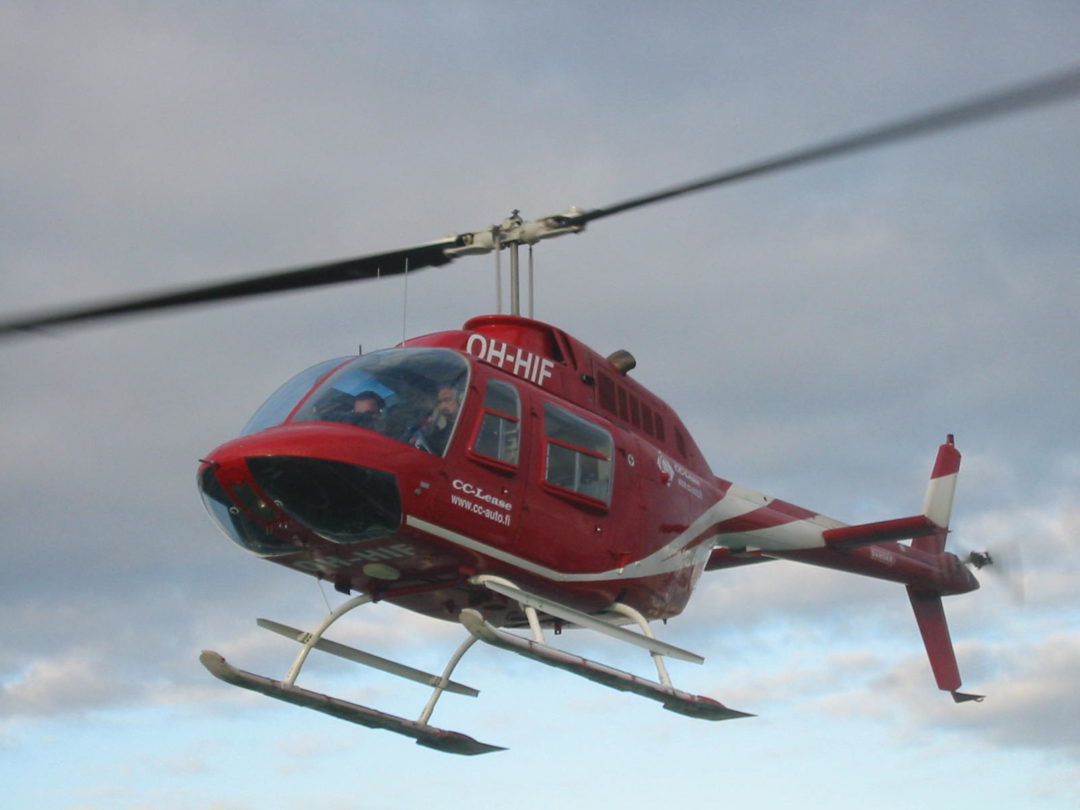Bell 206 Jet Ranger
The origin of the Bell 206 was a 1960 US Army programme to develop a light observation helicopter (LOH). Bell brought out five prototypes that were designated Bell YOH-4. However it didn’t work out so well for Bell and the YOH-4 model was rejected by the US Army. During testing Bell’s helicopter was judged to be an ugly duckling.
However Bell believed in its new helicopter and work began on improving the design to try to sell it in the civilian market. One alteration was to redesign the hull to be more elegant and streamlined. The new design was called the Bell 206A, and Bell’s managing director Edwin J. Ducayet christened it the Jet Ranger.

One of the world’s most iconic helicopters, the Bell 206 Jet Ranger. Source: Wikimedia commons.
The Bell 206A first flew on January 10th, 1966. It could carry a pilot and a total of four passengers. A longer version, called the Bell 206L LongRanger had room for 7 on board. It cannot be denied that the Bell 206 is a beautiful machine, and this is perhaps one reason why it became a success, despite being turned down by the military.
The American military now took a fresh look at the helicopter, and versions were ordered for both the US Navy and US Army. It became known in the army as the OH-58 Kiowa and employed as an observation helicopter. But the Bell 206 is known more as a civilian than military helicopter. Many news services use them for their traffic and news reporting. Also a number of police authorities use or have used the type, and the Bell 206L Long Ranger often serves as an ambulance helicopter, or in the case of large companies as a transport helicopter.
In 1982 pilots Ross Perot junior and Jay Coburn carried out the first flight round the world by helicopter in a Bell 206L named ”Spirit of Texas”. The journey took 29 days and 3 hours.
A rather strange fate was suffered by a Bell 206 Long Ranger in September 1995 when the low-flying machine annoyed a deer hunter in Washington State, USA. The hunter, who was armed with a bow and arrow, shot an arrow at the helicopter which pierced and bent a rotor blade. The metal arrow then hit the tail fin and tail rotor and damaged them. The pilot was able to keep the machine in the air, but was forced to land to inspect the damage. This must be the only, or at least one of the few occasions when a helicopter has been shot down by a bow and arrow!
In Sweden in 2009 the country’s first helicopter robbery took place when a stolen Bell 206 was used to place three heavily armed robbers on the roof of a G4S cash service depot at Västberga in southern Stockholm. The area’s police helicopter was meanwhile prevented from taking off as a dummy bomb had been placed on the helicopter pad at its base. This prevented a chase as the robbers fled with their haul of SEK 39 million. This money has still never been found.

The helicopter used for the Västberga robbery. Source Wikimedia commons.
The Swedish police take to the sky
When the Swedish police helicopter unit was established in the 1960s, the first machines were hired Bell 47s. The unit soon acquired its own Bell 47 and in 1967 the first police pilot training course began at the Swedish Army helicopter school at Boden, in the north of Sweden. In the same year Swedish Police Aviation received a far more modern machine than the Bell 47, namely a Bell 206A. This became the first of several Bell 206 helicopters that for more than 30 years became synonymous with the name “police helicopter” in Sweden. But in 2001 the first Eurocopter EC135 arrived, that would replace the Bell 206 veterans. Today Swedish Police Aviation still retains just one Bell 206L, which is used for pilot training at Säve airfield, Gothenburg. However the EC135s are already being replaced by newer helicopters after lives lasting less than half of those of the Bell 206. Once again the Swedish police are flying in helicopters made by Bell, this time in the more up to date Bell 429.
Bell 206 helicopters have so far been produced in over 7,300 examples, and are probably the most well-known helicopters in the world today.
